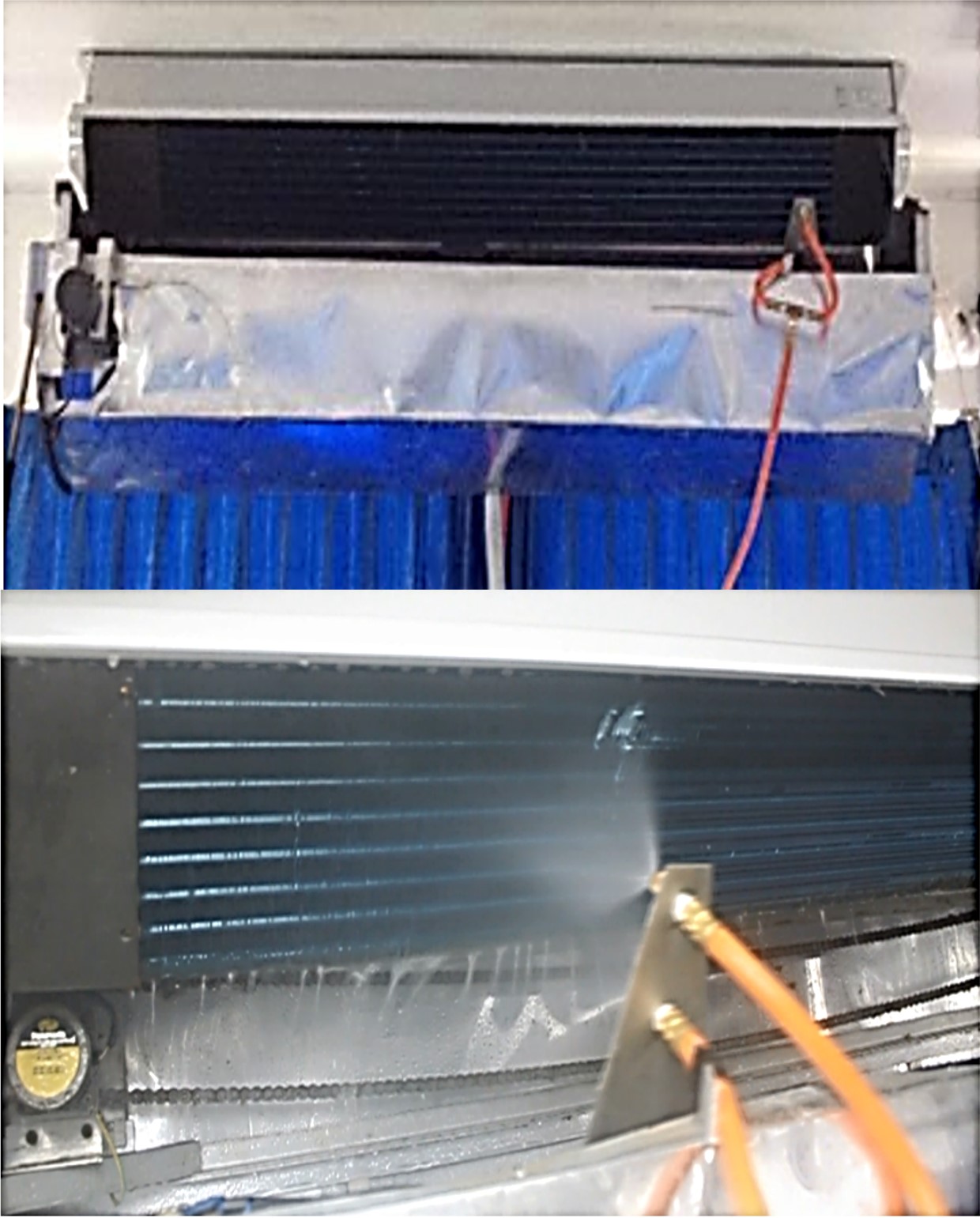Performance evaluation of the semi-automatic cleaner for split type air conditioner
Main Article Content
Abstract
This article aims to experimental investigate the application of a semi-automatic cleaner as cleaner for split type air conditioner. The study focused the evaporator where is located inside the room. The evaporator has a disadvantage when dust is accumulated on the outside of the evaporator tube. To solve this problem, in this investigation we used a semi-automatic cleaner as a cleaner instead of hand washed by human. Experiments will be divided into three cases: before washing, after hand washed and after being rinsed by the semi-automatic cleaner. Each test will be tested of three times. The semi-automatic cleaner for split type air conditioner was designed using two high pressure nozzles for cleaning both sides of the evaporator panel and controlled by a microcontroller. Finally, all three test results will be compared by Coefficients of performance (COP) and the energy efficiency ratio of the air conditioner (EER), respectively. It was found that the COP of the three cases, before washing, after hand washed and after rinsed by semi-automatic cleaner were 2.9, 3.4 and 3.8, respectively. While the EER with the same three tests were 9.8, 11.7 and 12.9, respectively. When the case of the after rinsed by semi-automatic cleaner was compared with the case in before washing and after hand washed, it was found that the COP in case after rinsed by semi-automatic cleaner were increased by about 31 and 11.8 %, respectively. In addition, EER in case after rinsed by semi-automatic cleaner were increased by about 31.6 and 10.3 %, respectively. It can be concluded that the semi-automatic cleaner for split type air conditioner saved more electrical power for the system.
Article Details

This work is licensed under a Creative Commons Attribution-NonCommercial-ShareAlike 4.0 International License.
This work is licensed under a Creative Commons Attribution-NonCommercial-ShareAlike 4.0 International License.
References
American Society of Heating, Refrigerating and Air-Conditioning Engineers. Handbook: Fundamentals, 1997, ASHRAE, USA.
American Society of Heating, Refrigerating and Air-Conditioning Engineers. Handbook: Refrigeration, 1998, ASHRAE, USA.
Stoecker, W.F., Jones, J.W. Refrigeration and air conditioning, 2nd edition, 1982, McGraw-Hill, Singapore.
Techarungpaisan, P., Theerakulpisut, S., Priprem, S. Modeling of split type air conditioner with integrated water heater, Energy Conversion and Management, Vol. 48, 2007, pp. 1222-1237.
Cengel, D.P. and Ghajar, J.G. Heat and mass transfer: Fundamentals & Applications, 4th edition, 2010, McGraw- Hill, New York.
Yeunyongkul, P., Watcharadumrongsak, P., RittidecH., S. Hybrid condenser for split type air conditioner, Silpakorn University Science and Technology Journal, Vol. 10(4), 2016, pp. 23-27.
Yeunyongkul, P. Optimum design of heat pipe condenser for vapor compression refrigeration [Thesis], 2012, Chiang Mai University, Thailand.
Yeunyongkul, P., Sakulchangsajatai, P., Ghajar, A.J. Experimental investigation of closed loop oscillating heat pipe as the condenser for vapor compression refrigeration, paper presented in 13th International Refrigeration and Air conditioning Conference, 2012, Indiana, USA.



